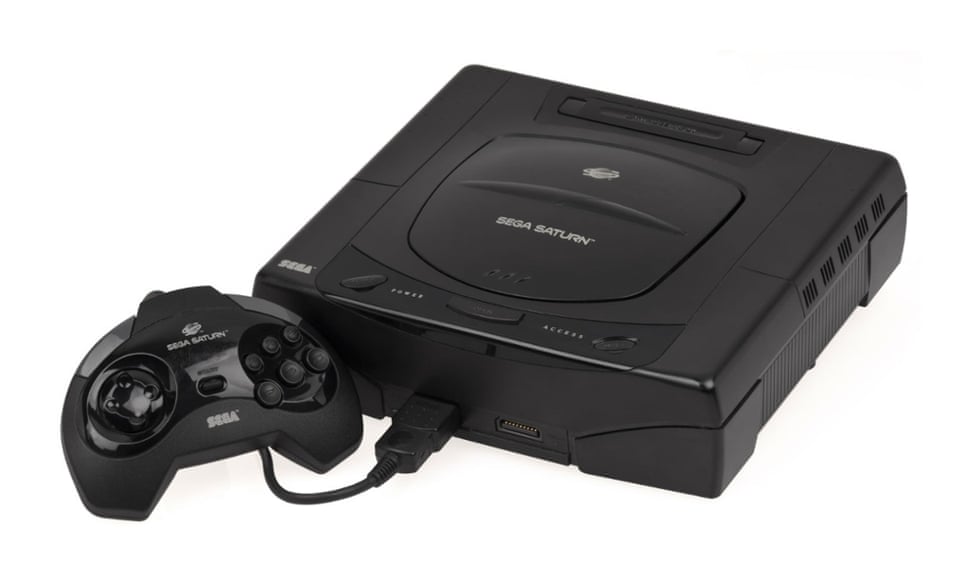- Joined
- May 11, 2013
- Posts
- 24,893
- Reaction score
- 13,616
- Points
- 2,755
- Location
- Morganton, N.C.
- Website
- conversations-ii.freeforums.net
The Guardian: How One Decision Killed The Sega Saturn


Twenty years ago this week, at the E3 video game conference in Los Angeles, the head of Sega of America accidentally killed the company’s Saturn video game console.
Tom Kalinske was in a bind. He knew that Sony was readying its new PlayStation machine for an autumn launch in the US (both the Saturn and the PlayStation had already been released in Japan at this point), and the hype was building. The creator of the Walkman, the portable music device that revolutionised the music industry, was coming after games. And it was serious.
Sony had spent 1994 on a global charm offensive. The company’s chief system designer, Ken Kutaragi, visited developers all over the world, bringing an impressive set of graphics demos (including the famed dinosaur 3D model) and promising a wealth of cool development tools and favourable production deals. Sega meanwhile, had been confusing and alienating its audience and development community with a string of add-ons for the hugely successful (but increasingly dated) Mega Drive, and a wealth of promises about new hardware platforms that never materialised. Sony had one product and one message: PlayStation is the future.
There were also rumours of a rift between Sega of Japan and Sega of America; although it was never quite as simple – or juicy – as that. What the divisions faced was a huge challenge in appeasing two very different markets. The Japanese office was encouraged to head straight into Saturn development after the launch of the Mega Drive because the machine hadn’t been a huge success in the domestic market.
However, the company had to be much more cautious about the US, where it wanted to protect and enhance the huge market share it had torn away from Nintendo. The 32X, a semi-32-bit add-on for the old console, was engendered almost entirely by the US R&D team – in fact, the original concept was designed by lead engineers Nebulous Miller and Marty Franz, who hastily jotted down the idea for a basic 32-bit system on a piece of hotel notepaper while attending the Consumer Electronics show in 1994.
But the order to go ahead with this curious hybrid came from Sega of Japan president Hayao Nakayama who – as incredible as it may seem today – was concerned not about the looming PlayStation, but about Atari’s Jaguar console. He wanted a quick stop-gap to rival the Atari system (which would go on to flop hopelessly) and the US team agreed. But this muddied the waters for the Saturn. The 32X was an expensive failure with little software support. And, although the Saturn was selling well in Japan, shifting almost 500,000 units in its first month, PlayStation was catching up.
Sega had an autumn US release for the Saturn all planned out; its production line was in motion, retailers were ready. But Japan panicked. Nakayama believed that Sega had to get into the US market early and establish a presence before Sony. So on 11 May, at the E3 event, Tom Kalinske went on stage and announced that the Saturn was not only launching early in the US, it was already on the shelves – at the basic price of $399. “Many Americans have gone to the extent of paying $800 and more for Sega Saturn units from Japan,” said Kalinske in the resulting press release. “We’ve decided to bring the product to market earlier than scheduled to meet the high consumer demand, to refine our marketing strategy over the summer, prior to the important fall season, and to get a head start on the competition.”
But it was a shambles. The machines were expensive and in short supply; only a handful of major retailers got them, alienating the rest of the market. There was only a small selection of games, including an OK port of the arcade hit Virtua Fighter, with few new titles expected until later in the year. All that was to come, but the big blow was only minutes after Kalinske’s announcement.
During Sony’s own E3 press event, Sony America chief Olaf Olafsson called head of development Steve Race on to the stage to make a brief announcement. In a piece of theatre that foreshadowed the cruelly funny PlayStation 4 game-sharing video produced by Shuhei Yoshida in 2013, Race calmly approached the lectern, put his notes down and said “$299”. Then left the stage. If he’d had a hand mic, he would have dropped it. The audience went wild.
Read more: http://www.theguardian.com/technolo...ecision-destroyed-playstations-greatest-rival
